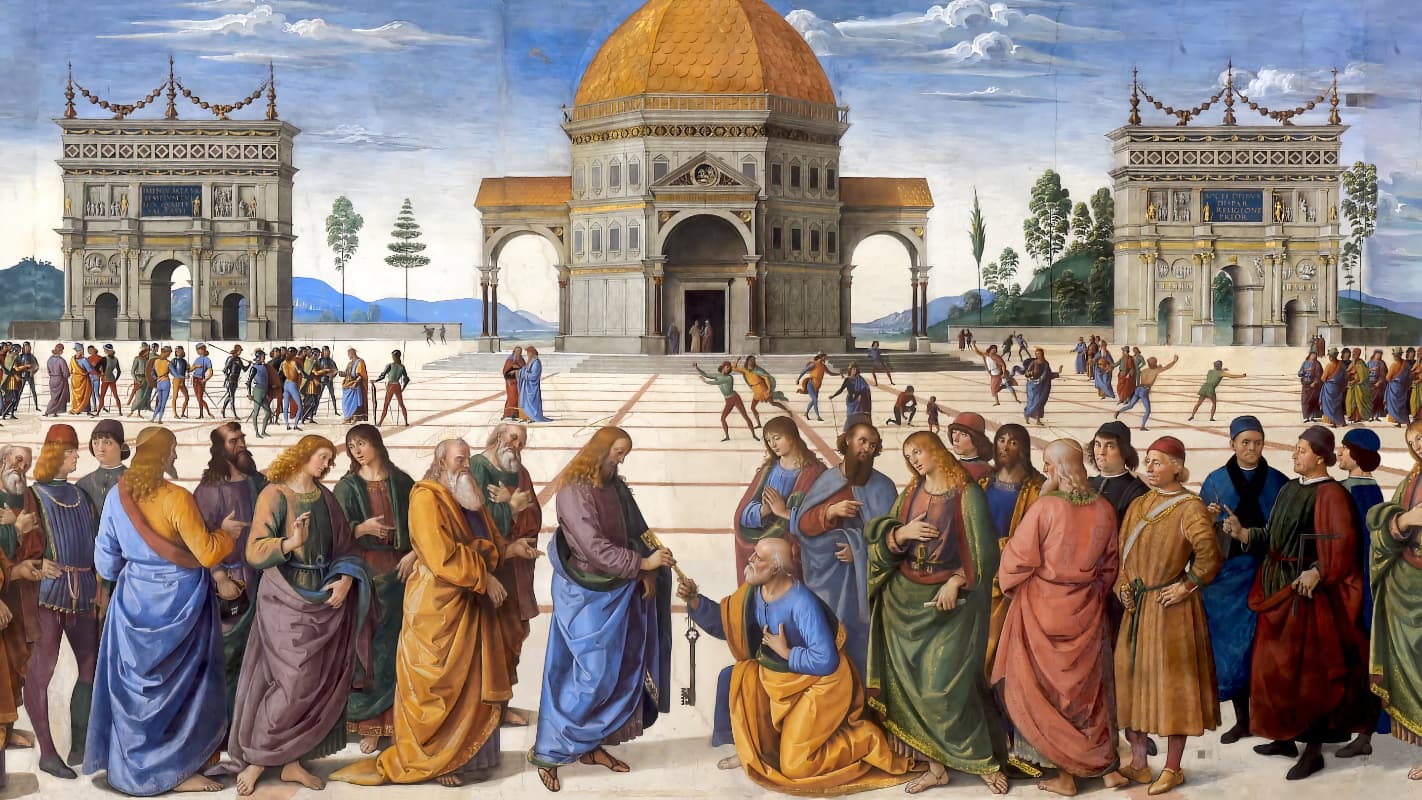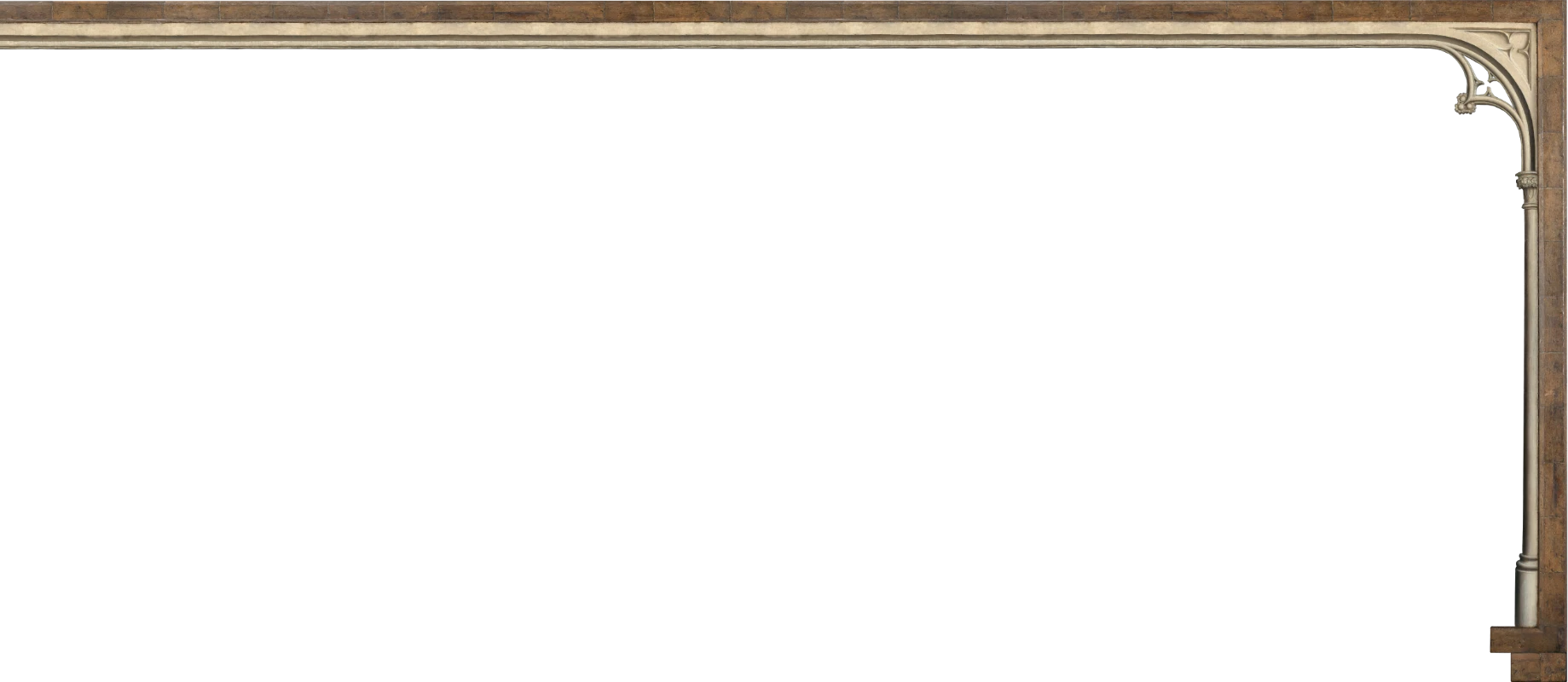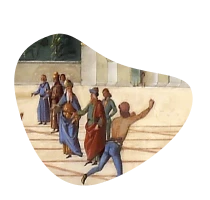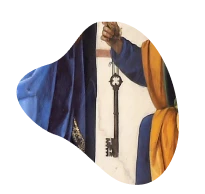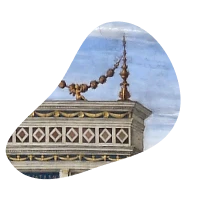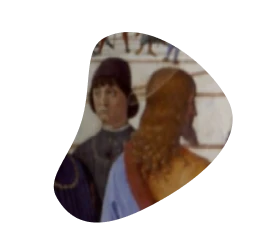During 1999 restoration work on the Sistine Chapel, workers peeled back layers of whitewash covering an 18th-century fresco behind the choir-loft. There, they found graffiti from the turn of the 16th century including one name that rocked the musicology world: Josquin.
How did a singer from Burgundian Flanders become Europe’s most sought-after composer? How did he end up in the Vatican, carving his name into the wall? Why do we still remember a man who died 500 years ago, and what was it about his music that keeps us coming back for more? We don’t even know where or when he was born. There’s controversy about his name, and where he lived when, and which of the works attributed to him he really wrote.
But there are a few things we do know about Josquin. In an age where most composers were anonymous, Josquin was the first superstar. He worked for two French kings, two Italian dukes, and two popes, and fundamentally changed the role of music in society. He rubbed shoulders with Leonardo da Vinci and the Borgias, he traveled extensively and spoke several languages, and he was the first composer ever to have an entire volume of music published. And he scratched his name into the wall of the Sistine Chapel.
The Pierre Boulez Saal marks five centuries of Josquin with a special festival in July 2022 dedicated to the performance of the 18 surviving masses (more or less clearly attributed to the composer) by The Tallis Scholars and their musical director Peter Phillips. For this podcast, commissioned for the occasion, we—Dutch musicologist and author Willem Bruls and music journalist Shirley Apthorp—have spend six months searching for traces of Josquin across Europe.

To find out how the Belgian lowlands produced so many influential composers and painters five centuries ago, we decided to begin our search in Antwerp, where we meet Stratton Bull, Canadian musicologist and director of the a cappella vocal group Capella Pratensis. He tells us about the unique 15th-century atmosphere that is still palpable in present-day Belgium, where one is surrounded by magnificent Renaissance architecture and art. This part of Europe was a real hothouse of cultural production also when it comes to music. Looking at the remarkable artistic quality achieved not only by Josquin, but also many other composers of his generation such as Jakob Obrecht, Johannes Ockeghem, Antoine Brumel and others, Stratton Bull says: “As a performer, it’s really easy to choose from this repertoire because it’s almost all good. You basically can’t go wrong.”
In Antwerp we also visit the Plantin-Moretus Library and Museum on the premises of one of the city's historic printing workshops and publishing houses. Librarian Kristof Sellerslach shows us the only surviving portrait of Josquin, a wood-cut, possibly copied from a painting and preserved in a 16th-century encyclopaedia in the library. In the article that goes along with the wood-cut, Josquin is praised as one of the best and most brilliant composers of all time. Interestingly, the entry on Leonardo da Vinci just above Josquin’s portrait is much shorter.

From Antwerp we travel to Condé-sur-l’Escaut, just over today’s French border, in the region where Josquin began and ended his days. There’s no trace left of the original 16th-century architecture in a town razed by successive wars. Instead, we search for a rumored plaque once said to have commemorated Josquin’s grave, finally finding a copy of the inscription in Lille:
Here lies Master Josse Depres
Who used to be a dean of this place
Pray God for the dead
That he grants them his paradise
He died in the year 1521 on August 27
You have always been my hope
What might Josquin’s upbringing have been like? We talk with American musicologist Jesse Rodin about the psychology of Josquin’s possibly rather colorful childhood, growing up with his aunt and uncle in Condé and later as a choirboy in Cambrai, and how it might have formed the man he became. At the end of his long career, Josquin was to return to Condé-sur-l’Escaut. He left a bequest for his Pater Noster to be performed outside his house every year on the anniversary of his death. Not surprisingly, the house no longer exists—but the music remains.
Master of the Notes is a Max Music Media production commissioned by the Pierre Boulez Saal and written by Shirley Apthorp and Willem Bruls.
Born in South Africa, Shirley Apthorp grew up in Australia and studied music at the University of Tasmania. Since 1996, she has lived in Berlin, writing about music for numerous international publications including the Financial Times (UK), Bloomberg (USA), and Opernwelt. Her work has been published in the United Kingdom, the U.S., Australia, Germany, Austria, Japan, Brazil, the Netherlands, Norway, and South Africa. In 2010, she founded the award-winning non-profit organization Umculo which supports social development through music theater in South Africa. Shirley Apthorp received the Classical:NEXT Innovation Award in 2019.
Willem Bruls holds degrees in literature and history of art and works as dramaturge, author, music critic, and librettist. He has published extensively on a wide range of subjects, including most notably a study of Wagner’s Ring cycle and orientalism in opera. He collaborated with directors such as Guy Cassiers and Pierre Audi and directed several music theater productions himself. He wrote a stage adaptation of Pasolini’s Teorema for the Ruhrtriennale Festival and has given workshops on contemporary music theater, libretto writing, and youth theater throughout Europe. He serves as an advisor for the performing arts to the Dutch Arts Council.
Credits
Original Music for this podcast was composed by Karim Said and recorded by Angela Boutros, Elias Aboud, Roshanak Rafani, and Joseph Protze of the Barenboim-Said Akademie.
Excerpt from Josquin des Prez, Ave Maria, virgo serena, recorded by The Tallis Scholars and Peter Phillips © Gimell Records.
Excerpt from Josquin des Prez, Pater noster, recorded by The Binchois Consort and Andrew Kirkman © courtesy of Hyperion Records Ltd.
Excerpt from Josquin des Prez, El Grillo, recorded by Capilla Flamenca © courtesy of NAXOS Germany - www.naxos.de
In case of violation of copyright, we kindly ask the rightsholders to contact us.
